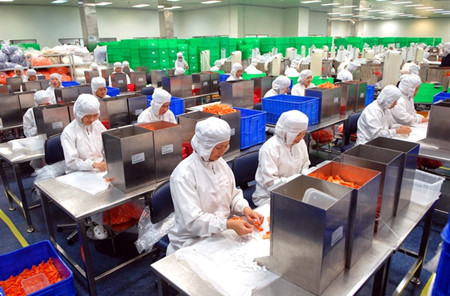Linking for economic development in Vietnam’s southeastern region
It has many advantages in developing industry and services. During the current international integration, its provinces should enhance their links to share sustainable growth.
In recent years, southeastern provinces have developed dynamically with high economic growth in electronics, software, commercial services, logistics, finance, telecommunications, and tourism.
The region comprises HCMC, Ba Ria-Vung Tau, Binh Duong, Binh Phuoc, Dong Nai, Tay Ninh, Long An, and Tien Giang.
The region leads Vietnam in transportation expansion and economic cooperation with other countries in Southeast Asia.
In the first half of this year, the region attracted the most foreign direct investment with almost 52% of newly registered projects, 62.5% of projects to increase investment capital, and more than 42% of the total investment capital of Vietnam.
Its export revenues account for nearly 60% of the nation’s total. The region’s economic openness index, measured by average-trade-to-GDP, was nearly 110%, compared to Vietnam’s 70%.
Its ratio of investment to GDP is 50%, 1.5 times higher than the national average, and its economic growth rate is 1.4 to 1.6 times higher than the national average.
The southeastern economic zone has developed a satellite network around Ho Chi Minh City linked by open corridor routes. It has connected to industrial zones and industries including oil and gas exploitation and processing, steel rolling, electricity, IT, chemicals, fertilizers, and raw materials.
Although the region has many clear advantages, its current growth remains modest.
 |
At a recent Southeast Region Economic Forum in Ho Chi Minh City, Vo Van Tu, Director of Lam Dong province’s Center for Trade Promotion, said: “First we need a competent steering committee which includes central ministries and agencies to conduct master-planning to ensure the region’s future growth. We lack a mechanism and policies to realize such planning. Our current situation is that provinces do what they want instead of following a master-plan.”
To improve the quality of the region’s economic growth, human resources, and infrastructure, Do Ha Nam, General Director of Intimex Group, which exports pepper, cashew, coffee, and other farm produce, said: “Why don’t we connect transportation between the region’s cities and provinces to attract more investors.
For instance, a number of provinces like Binh Duong now have good industrial infrastructure and want to expand investment in other localities. But they can’t realize these plans due to a lack of transportation and poor infrastructure.”
To turn the southeastern region into a hub of the garment and textile industry, which accounts for 60% of Vietnam’s export revenues, provinces should invest more in human and material resources.
Doctor Vu Thanh Tu Anh, Director of Research at the Fulbright Economics Teaching Program, said “Ho Chi Minh City and enterprises should invest in new designs, schools, and personnel training institutes for the sector to create fashion brands.”

